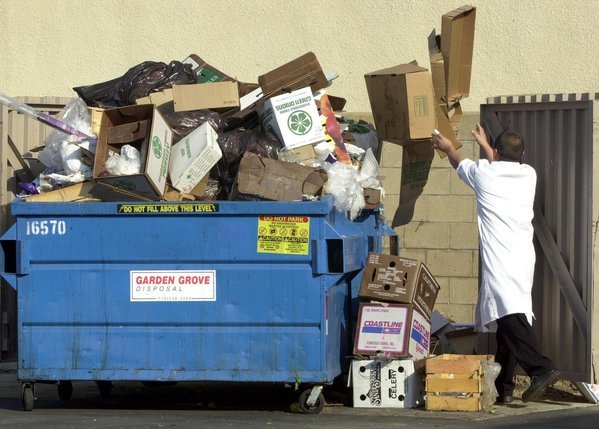
Up to half of the food produced worldwide never makes it into a consumer's mouth, according to a new report.
That’s as much as 2 billion tons of grub that’s wasted, according to a study released Thursday by Britain's Institution of Mechanical Engineers (hat tip to the Guardian).
Part of the problem is in the supply chain, in which inefficient agricultural practices, inadequate infrastructure, limited transportation options and poor storage capacity lead to squandered harvests and misused land, water and energy resources, according to researchers.
But consumers and retailers are also to blame, according to the group.
Overly strict sell-by dates means food is often thrown out before its time, the study says. The preponderance of buy-one-get-one-free offers causes households to buy more food than they can eat before it spoils. And customer demand for cosmetically perfect fruits and vegetables results in piles of scratched or misshapen — but still nutritious — produce ending up in the trash.
Quiz: How well do you remember 2012?
In Britain, some 30% of vegetable crops are left unharvested because they’re not pretty enough, according to the report. In Europe and the U.S., consumers dump half of the food they buy, researchers said.
That’s despite the nearly 1 billion people who go hungry globally, and the additional 3 billion mouths to feed expected by 2075.
“The amount of food wasted and lost around the world is staggering,” said Dr. Tim Fox, who heads up the energy and environment division at the engineers’ group.
In a separate report this summer, the Natural Resources Defense Council said that Americans waste up to 40% of the country’s food supply, an a cost of $165 billion. That’s 20 pounds per person per month, according to the advocacy group.





